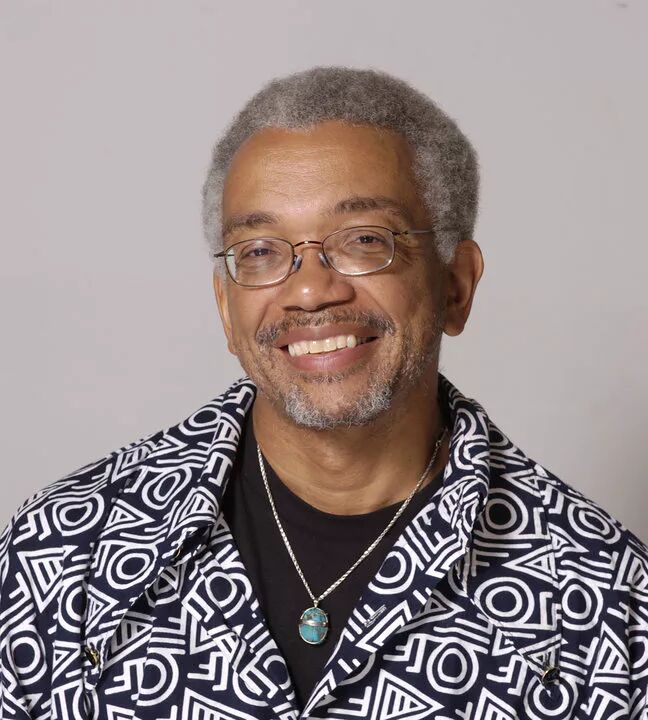
They say a picture is worth a thousand words, but when it comes to Patric McCoy’s photos, they’re worth a lifetime. An environmental scientist by trade, the Chicago-born and raised photographer came from a family of photographers and art collectors. One could say it’s in his blood. McCoy continues to collect contemporary Black art, a passion he has pursued for 50 years.
He has amassed 1,300 pieces of fine art, with 90% of them created by Chicago’s artistic community. In 2003, McCoy co-founded the nonprofit Diasporal Rhythms, an arts organization that promotes the collection of art from the African diaspora. Now retired from his work at Chicago’s U.S. Environmental Protection Agency’s (USEPA) Regional Office, McCoy continues collecting art, as well as producing it. With his latest exhibit, Take My Picture, he puts himself behind the camera and other Black queer men in front of its lens.
The exhibit, taking place at Chicago’s Wrightwood 659 gallery, Take My Picture is a culmination of McCoy’s photography exploits throughout 1980s Chicago. Amassing unstaged shots of Black queer men within the Loop, Chicago’s downtown, the Take My Picture exhibit is ten years worth of photos and a collection of untold stories.
Queerty chatted with McCoy about his love for art collection, his latest exhibit, and Black queer life in 1980s Chicago.
QUEERTY: When did you start photography in general, along with your art collection?
MCCOY: Well, photography in general has kind of been in my blood from the very beginning. My father was a photographer and now am the recipient of photo albums that my grandmother and my great-grandmother did. My family’s been photographing forever because I’ve got [photographs] from my great-grandmother from the 1890s and stuff like that. So, we’ve had it in our blood. When I was in high school, I started using the point and shoot cameras. I’d take them out with my little friends when we’d go on little outings and stuff, and even in the house. I’ve always taken pictures, but I didn’t take them seriously until the 1980s. That’s when I bumped it up on the advice and prodding of one of my best friends. He was a professional photographer, and he saw me with this point and shoot, and he said, “You need to get serious. You need to bump it up and get a 35 millimeter camera.”
So to answer your question, with this particular body of work that started in the ‘80s, it was actually from taking pictures and trying to get really good pictures of the world that I was in with these point and shoot cameras. In fact, I have a photo album that I call Trade Wins, because I was taking pictures of all my trades. Yes. And it’s from the ’70s.
What was the inspiration behind creating this exhibit and highlighting Black queer men in the ’80s?
Now, I can tell you, since I had a lot of interactions with these people, that they were doing everything that was queer. Their activities were queer. Their identification was that “I’m just like anybody else, and I’m masculine presenting.” And in fact, the word that was of issue, during that time, was gay. They would tell you, “I’m not gay.” Now, I know they just got out of bed with a man that has done everything imaginable. We didn’t have one of the aspects of this culture today, which was you did not feel compelled to identify what you did. [During] that time period, people were very fluid and flexible sexually, but in regards to identity, they were very strident. “This is not who I am. I’m not that.”
So, when you say that I was functioning around queer men and so forth, we would call that queer, but they did not think that way and I think part of what I believe the importance of this show is that there’s been a change in the last several decades. There’s a change in the way people think, even the people within [queer] culture. In fact, there’s a person just yesterday, his photograph, is in the show and he was kind of upset because he misunderstood when I said he’s in the section that deals with “The Gaze”, the look, and he thought I was saying “The Gays.” He was giving me a little static. I was like, “No, that’s not what it’s about.” But I’m saying in my head, But I know what you did. You can get upset with the word all you want, but I know what you did. Okay?
What was the Rialto Tap’s influence within your photos and that process of obtaining them?
It was central to it. Because by that time, in the mid-80s, I had already set this routine of riding my bicycle to work and I would stop in the Rialto on the way to work, at lunch break, and late at night. Now, what is the Rialto Tap? Well, it was a dive bar on the seedy end of the downtown area of Chicago at the time. And this was the area that had all the bookstores, the peep shows, the burlesque shops and the SROs, and the homeless shelters. Everything was just seedy on that end of the loop and the Rialto Tap was sitting in the middle of that. It was the bar for people who came out of the homeless shelters and back then, the homeless shelters were overwhelmingly white. The Rialto was the spot for these old white men to come and nurse a drink because they were very cheap.
By the 1980s, the shift in the society was so dramatic that all of a sudden these homeless shelters became the sort of place of last resort for so many young Black men. Reagan came in, we had the recession, jobs were leaving the city, manufacturing was shut down, so people started not having jobs, which up until then, was an unusual situation. There were a lot of young men that were coming that were getting displaced and pushed out there.
The street gangs were really big by the 1980s. They were very huge institutions and they controlled huge swaths of the area of the black neighborhoods of the south and west side. What happened within the gang structure is that people that were in violation of the gang rules would either have to take a punishment or they had to flee the area because they couldn’t be in their area and there was no other gang area they could go to. So the downtown area became a neutral spot where you could flee to.
You also had these huge public housing projects in Chicago and public housing shifted from supporting families to supporting women with children. These guys would have to flee the public housing during the time of the month that the social workers came through because you can’t have a man around. So you would have all these Black men coming into the Loop, just for maybe a week or two, before they could go back to the public house.
All the Black people that were working in offices were stopping by the Rialto too. So it was a mixing ground of all kinds of people. The DJs that were at the warehouse where house music started would sometimes come down and DJ at the Rialto. In the early days of the Rialto, it was a drug bar. It was a place where you could smoke weed with impunity at the bar, just like you smoke a cigarette. And they had a rooming house upstairs on the second and third floor above the place. They had a little door that said, “Rialto Rooming House.” And I said, “That’s the gateway to hell.” Everything was going on up there.
So, it became a place where all these different kinds of Black men that needed something, they’re getting away from something. They were available for interactions. And the society in the ‘80s was still coming off of the sexual freedoms of the ‘60s because the ‘60s were wild. And so the ‘80s were still having that concept that people, as I said earlier, they didn’t identify. They wouldn’t put a label on themselves, but they actually were very free with their bodies. That’s when we had the bath houses and all that stuff.. In fact, there were a lot of men in the bars that had families and that was not a problem for them.
What were your thoughts when you took these photos and what runs through your mind when you look at these photos decades later?
I came into this activity once I got the 35 millimeter camera. I was going to teach myself how to use this sophisticated camera. So I made a commitment. I was going to take a picture every day, and I was going to carry this camera everywhere and I was going to stop what I was doing and take a picture if anybody asked me to take a picture. Now, I did not at that time that people were going to ask me to take their picture, but that’s what happened. People would see me with this camera and holler out to me, don’t know me from Adam, and say, “Hey, take my picture.”
There was a hunger in our people and among men to be represented and to be seen. In the early age of photography, those films were not set up to represent Black people very well. In fact, those point and shoe cameras were horrible and people did not know how to use cameras well. So, they had no real experience of how to see themselves in a photograph. They see this nerdy guy on a bicycle with this expensive camera going through the ‘hood, and they’re like, “Hey, take my picture.”
Then I started thinking, “Okay, what’s this other phenomenon?” I believe that all men are peacocks. Some of the people that asked me to take their picture, they literally crawled out of the gutter to get it. So, I think there’s a peacock thing in men. Some of them can’t walk past a mirror without having to take a picture of themselves. But I was really kind of interested in why people would ask me to take their picture. And they had no idea that they would ever see this.
Now it turns out they did get to see it. My father had built a dark room, and he said, “You can use it.” So I would go at night and develop the film. I would print them and carry them around in my little backpack the next day. Because I’m going through the same kind of neighborhoods, I’d see some of those same people. I’d give them their picture and they would just be stunned that one, I took the picture, and then two, I’d come back and give it to them. So it just fed on itself and definitely in the Rialto. When I’d come into the Rialto, everybody would just say, “Hey, come outside. Take my picture.” I did not ask anybody to take their pictures. Now I did take candid shots, but I never asked anybody to take their pictures. It was all them asking me.
It’s also very interesting that, through all this, the pictures aren’t staged and that the photo subjects are simply individuals who wanted to be seen.
Yeah, there’s a sad part of it too because this is the time when HIV/AIDS is hidden. We were, as a group, Black males, we were slow to recognize that this was real. We had seen it advertised in all the protests on the white side of town, but people were believing first that this was a white disease and it was not going to affect us. Then, it slowly started to resonate that some of our friends were disappearing. It started by the end of the ‘80s, but in the early part of the ‘80s people were actually acting as if it wasn’t real. So when I looked back on my photographs, I recognized I caught these people before they realized that they were in the midst of a plague. It was really a dangerous time period.
So the photographs have a lot of different lines of introduction. I’m looking at a good number of the images that I have, which are frontal, where the person is looking directly at you. They’re gone and they went at an early age. It’s sad because we now know that it didn’t have to be that way. If there was the sort of impetus and commitment of the larger society, the government, and so forth to tackle this, they could have knocked it out and those people could have lived. So it’s kind of a sad memorial too. I mean, it’s fun when I think about the other aspects of it, but it also is sad to recognize that just by having a camera and taking these pictures, it was clear this was a very dangerous time to be doing the types of activities that we were doing.
I lost so many friends during that time period. It was like, you lose a whole set of friends, you develop a new set, all of them are gone. It’s sad. And you’re right. What I just described, the impact in the Black community was immense and yet the public consciousness looks more on the effect on white communities.
I had to say before we end the interview, do you have a favorite image from your show?
Thousands of photos. Now, there are too many of them, all in different categories. There are some where I was doing street photography. Then the ones where I’m capturing our people, Black men, same gender loving men. And there are some that are just mind blowing. So, it would be hard for me [to choose] and [there are] just so many.
In the show, there’s one, it’s called New Day where I was sitting on the bus and there’s a man that’s sitting in front of me and he’s looking out the window of the bus. Back then we had buses with the windows flapped open and they couldn’t close them properly. The sun is coming in there. It’s a beautiful photograph, and it just sort of has a sense of the hope and the potential that Black people have always been looking to experience. It’s like the sun is just coming up. It’s going to be a new day. It’s going to be better.
*Take My Picture exhibit is running now until July 15 at Wrightwood 659.


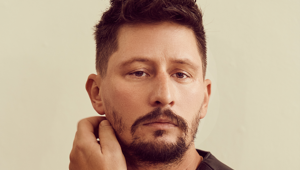

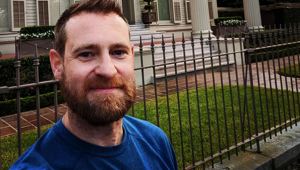


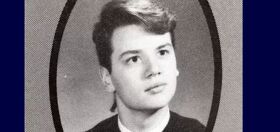

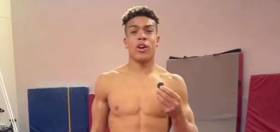

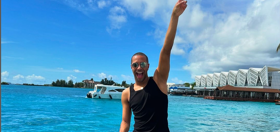
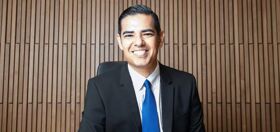

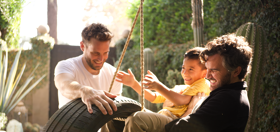


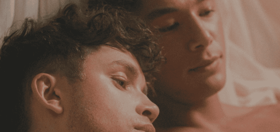


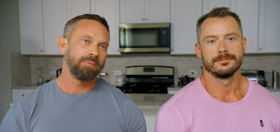
Kangol2
I wish I were able to catch this because it looks like a great show, and it’s especially good to see another aspect of the US LGBTQ community documented for posterity, especially with such artistry. Thank you, Patric McCoy!